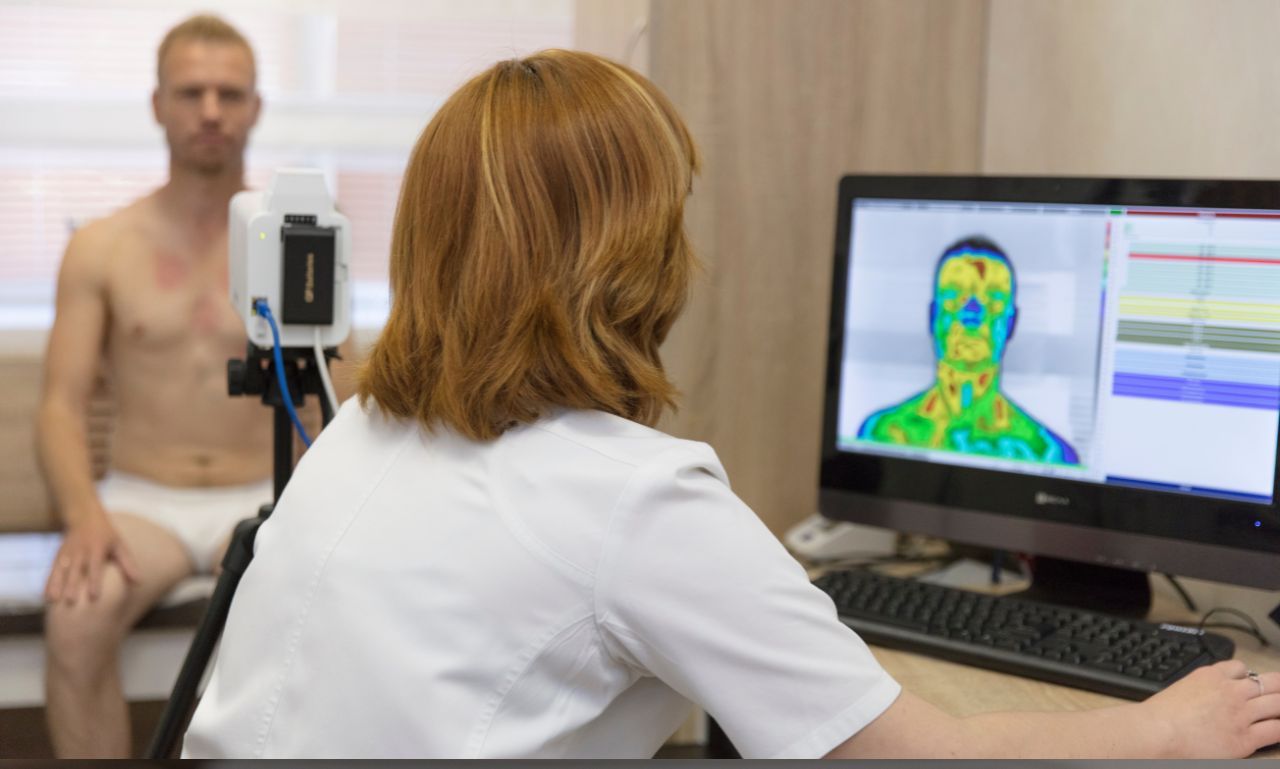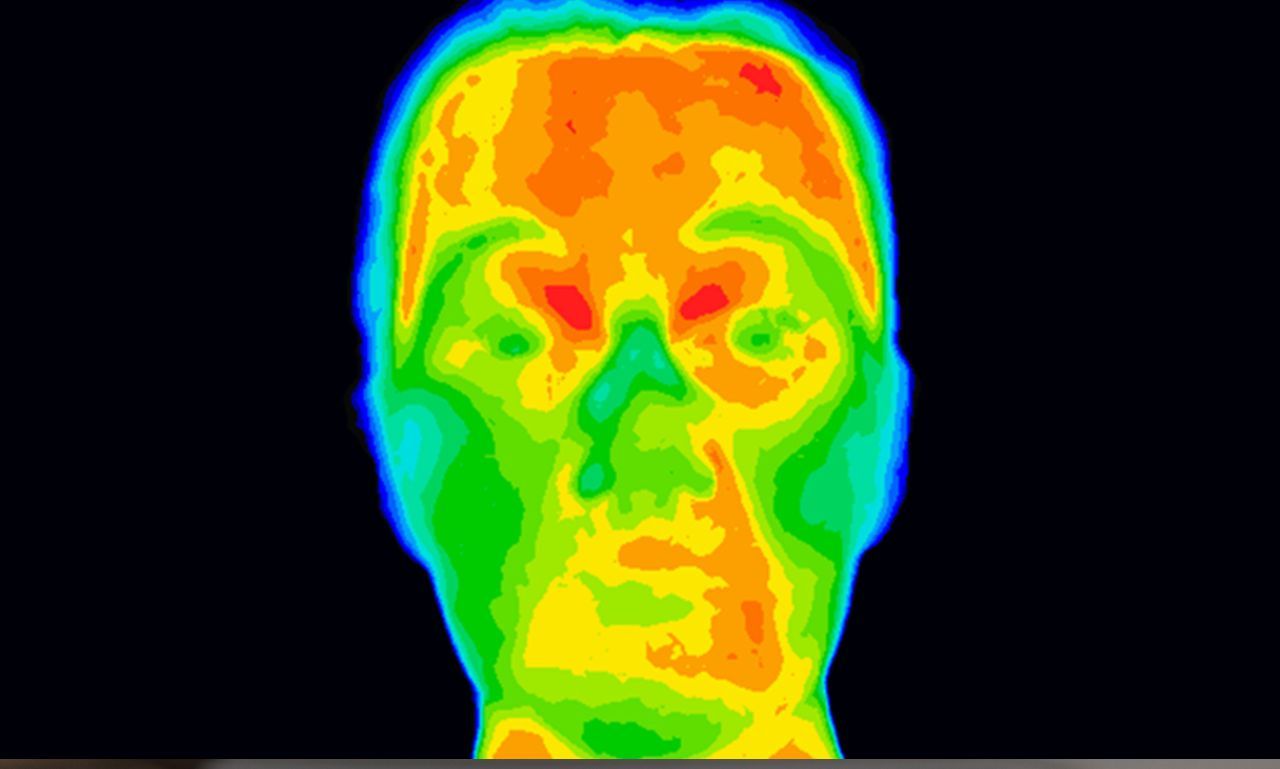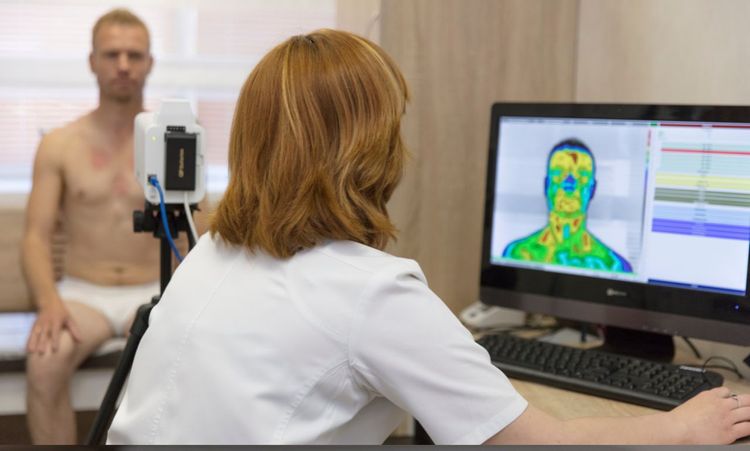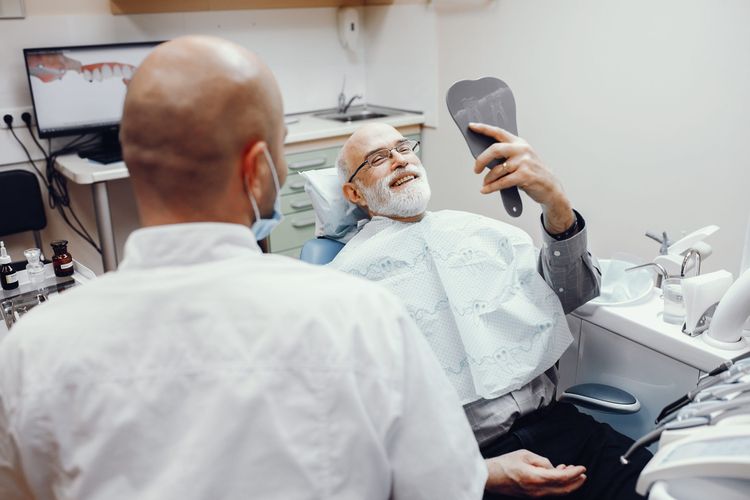The human body is a symphony of intricate processes, a delicate dance of energy and function. But what happens when this harmony is disrupted? What happens when an instrument falls out of tune? Often, the first sign is a change in temperature.
Enter full body thermography, a cutting-edge technology that allows us to visualize these subtle shifts in heat, revealing potential health concerns before they manifest as noticeable symptoms. Imagine peering beneath the surface, witnessing the body's internal landscape through the lens of infrared imaging. This is the power of thermography, a tool that empowers you to take a proactive approach to your well-being.
What is Full Body Thermography?
Full body thermography, also known as digital infrared thermal imaging (DITI), is a non-invasive diagnostic procedure that captures the heat patterns emitted by your body. This is achieved using a highly sensitive infrared camera, which detects and records these thermal variations, translating them into a visual map called a thermogram.
Unlike traditional imaging techniques that rely on radiation or contrast dyes, thermography is entirely radiation-free and requires no injections. It simply measures the natural infrared radiation emitted by your body, providing a safe and comfortable experience for individuals of all ages.
How Does Full Body Thermography Work?

Every living cell in your body emits infrared radiation, a form of electromagnetic energy invisible to the naked eye. The intensity of this radiation fluctuates based on various factors, including blood flow, metabolic activity, and the presence of inflammation.
During a full body thermography scan, the infrared camera captures these subtle temperature variations on the surface of your skin. The camera then translates these variations into a color-coded image, where different colors represent different temperature ranges.
For instance, areas of increased blood flow and inflammation typically appear as warmer colors (red, orange, yellow), while cooler areas (blue, purple) might indicate reduced circulation or nerve dysfunction. By analyzing these patterns, trained thermographers can identify potential areas of concern that warrant further investigation.
Health Conditions Detected by Full Body Thermography
Full body thermography serves as a powerful tool for detecting a wide range of health conditions, often in their early stages when traditional methods might not yet reveal any abnormalities. It acts as a vigilant sentinel, alerting healthcare practitioners to subtle changes that could indicate the presence of:
Breast Health Issues:
- Breast Cancer: Thermography can detect the increased blood flow and metabolic activity associated with tumor growth, often before a tumor is large enough to be felt or detected by mammography.
- Fibrocystic Breast Disease: This condition, characterized by benign breast lumps, often exhibits distinct thermal patterns that can be identified through thermography.
- Mastitis: Inflammation of the breast tissue, often associated with breastfeeding, can be readily detected by the increased heat it produces.
Cardiovascular Conditions:
- Peripheral Artery Disease (PAD): Thermography can identify areas of reduced blood flow in the limbs, a key indicator of PAD.
- Deep Vein Thrombosis (DVT): The inflammation associated with DVT often causes a noticeable increase in temperature in the affected leg, which thermography can detect.
- Raynaud's Phenomenon: This condition, characterized by spasms of blood vessels in the fingers and toes, can be identified by the distinct cold patterns it produces on a thermogram.
Musculoskeletal Disorders:
- Arthritis: Thermography can detect the inflammation associated with various types of arthritis, including osteoarthritis and rheumatoid arthritis.
- Back Pain: Thermography can help pinpoint the source of back pain, whether it's due to muscle strain, disc herniation, or other spinal conditions.
- Carpal Tunnel Syndrome: Compression of the median nerve in the wrist often leads to a characteristic temperature difference between the affected hand and the unaffected hand, which thermography can detect.
Digestive Disorders:
- Inflammatory Bowel Disease (IBD): Thermography can detect the inflammation associated with IBD, including Crohn's disease and ulcerative colitis.
- Irritable Bowel Syndrome (IBS): While not as well-established, some studies suggest that thermography may be helpful in identifying patterns associated with IBS.
Inflammation and Pain:
- Nerve Impingement: Thermography can detect the altered temperature patterns caused by compressed nerves, such as in sciatica or carpal tunnel syndrome.
- Neuropathy: Damage to the peripheral nerves often results in abnormal thermal patterns, which thermography can identify.
- Complex Regional Pain Syndrome (CRPS): This chronic pain condition often exhibits distinct thermal changes in the affected limb, making thermography a valuable diagnostic tool.
Dental Health Concerns:
- Tooth Infections: Thermography can detect the increased blood flow and inflammation associated with dental infections, such as abscesses.
- Temporomandibular Joint Disorder (TMJ): Inflammation and dysfunction of the TMJ can cause temperature changes in the jaw muscles, which thermography can identify.
Advantages of Full Body Thermography
Full body thermography offers a compelling array of advantages over traditional diagnostic methods, making it an increasingly popular choice for individuals seeking a proactive approach to their health:
- Non-Invasive and Painless: Unlike procedures like biopsies or endoscopies, thermography involves no needles, incisions, or discomfort. The scan is quick, painless, and requires no special preparation.
- Radiation-Free: Unlike X-rays, CT scans, and mammograms, thermography uses no ionizing radiation, making it a safe option for people of all ages, including pregnant women and children.
- Early Detection: Thermography can detect physiological changes associated with disease processes long before they manifest as noticeable symptoms or are detectable by other methods. This early detection allows for timely intervention and potentially better treatment outcomes.
- Full Body Assessment: A single thermography scan can provide a comprehensive assessment of multiple organ systems and bodily functions, offering a holistic view of your health.
- Monitoring Tool: Thermography can be used to monitor the effectiveness of treatment and track changes in your health over time, allowing for personalized healthcare strategies.
Limitations of Full Body Thermography
While full body thermography offers a powerful tool for detecting a wide range of health conditions, it's essential to understand its limitations:
- Not a Standalone Diagnostic Tool: Thermography is not a replacement for traditional diagnostic methods. It serves as a complementary tool that can provide valuable information to guide further investigation and diagnosis.
- Interpretation Requires Expertise: Accurately interpreting thermograms requires specialized training and experience. It's crucial to seek out qualified and certified thermographers to ensure accurate results.
- Limited Specificity: While thermography can detect abnormal heat patterns, it cannot always pinpoint the exact cause. Further testing is often necessary to confirm a diagnosis.
- Insurance Coverage Varies: Insurance coverage for thermography varies widely depending on the provider and the reason for the scan. It's essential to check with your insurance company to determine your coverage.
Who Can Benefit from Full Body Thermography?
Full body thermography can be beneficial for a wide range of individuals, including those who:
- Are at increased risk for certain health conditions, such as breast cancer, heart disease, or diabetes.
- Have a family history of chronic diseases.
- Are experiencing unexplained symptoms, such as pain, fatigue, or digestive issues.
- Want to take a proactive approach to their health and identify potential issues early.
- Are seeking a safe and non-invasive alternative to traditional diagnostic methods.
- Want to monitor the effectiveness of treatment and track changes in their health over time.
Preparing for a Full Body Thermography Scan

Preparing for a full body thermography scan is relatively simple. Here are some general guidelines to follow:
- Avoid stimulants: Avoid caffeine, nicotine, and alcohol for at least 2 hours before your scan.
- No strenuous activity: Refrain from strenuous exercise for at least 1 hour before your scan.
- Loose-fitting clothing: Wear loose-fitting, comfortable clothing that can be easily removed or adjusted.
- Remove jewelry: Remove any jewelry or metal objects that could interfere with the scan.
- Follow specific instructions: Your healthcare provider may provide additional instructions based on your individual needs.
Conclusion
Full body thermography stands as a powerful ally in the pursuit of proactive healthcare. By visualizing the body's thermal landscape, it offers a unique window into our inner workings, revealing subtle clues about our health that might otherwise go unnoticed. While not a replacement for traditional diagnostic methods, thermography serves as a valuable complement, providing early detection, non-invasive assessment, and a holistic view of our well-being. As we continue to unlock the secrets held within the language of heat, full body thermography promises to play an increasingly vital role in shaping the future of personalized and preventative medicine.




